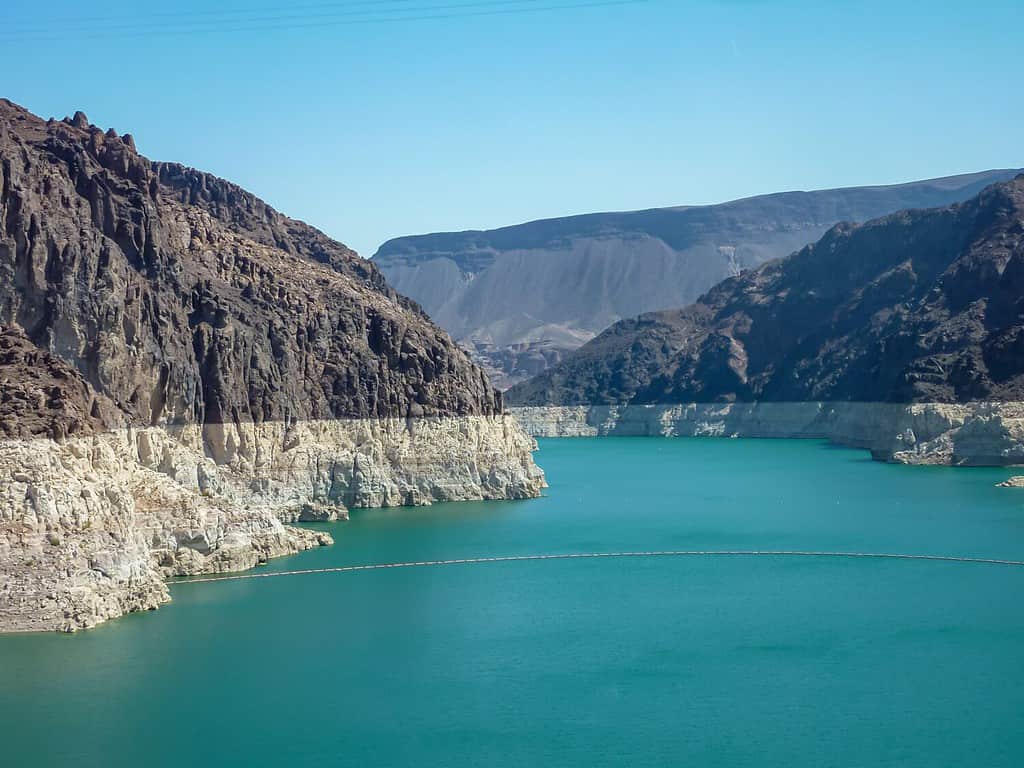Lake Mead and the Colorado River Basin have greatly benefited from investments made to increase system conservation and enhanced hydrology. Last year, the lake reached historic lows and numerous bodies were discovered, shocking the entire nation.
The Colorado River Basin’s Lake Mead will function at a Tier 1 shortage. This will begin in 2024. If this occurs, it is above the Tier 2 shortfall it is currently experiencing. According to predictions from a 24-month research period, Lake Powell, which is now operating at a Tier 2 shortfall alongside Lake Mead, would function at a Tier 1 shortage in 2024.

Lake Mead covers over 150,000 acres.
©Christopher Moswitzer/Shutterstock.com
Lake Mead’s water level was recorded at 1,049.75 feet in spring 2023. This is about six feet higher than the expected level. This is nearly 40 feet more than it was just five months earlier.
The Importance of Lake Mead and the Colorado River Basin
In the American Southwest, one of the main water supplies comes from the Colorado River Basin. It presently supplies water to 40 million people and, from the early 1900s, has sustained the region’s economic development.
The largest reservoir in the country by volume is Lake Mead, which was created by the renowned Hoover Dam along the Colorado River. Since it supports over 50% of the people in the Colorado River Basin, the reservoir is essential to survival.
What Caused Lake Mead to Dry Up?

Lake Mead water levels during the height of the drought.
In the fall of 2022, both Lake Mead and the Colorado River Basin were shockingly low. Specifically because of the significant, 20-year drought conditions brought on by a mix of manmade and natural factors, Lake Mead had record-low water levels.
Farmers in the area are expected to be the initial ones to feel the effects of the federal water restrictions, so they will need to take measures to conserve water like fallowing land, which means that some fields are unable to be planted for the full growing season.
Water shortages will have an impact beyond the water supply should water levels start to drop again in the upcoming years. In fact, if the reservoir falls below 895 feet, it is deemed a “dead pool” state.
This endangers the Hoover Dam’s capacity to generate energy and leaves over a million individuals in Arizona, California, and Nevada without electricity. Even though the water levels are rising slowly, it is beginning to slow down.
Here’s to hoping that the reservoir never dips under 900 feet, The future of millions depends on it.
The photo featured at the top of this post is © fellswaymedia/Shutterstock.com
Thank you for reading! Have some feedback for us? Contact the AZ Animals editorial team.







